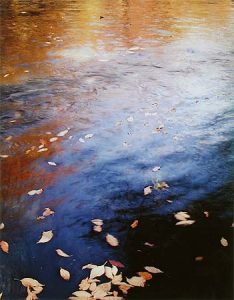
The Dye Transfer process produces full-color prints from film exposed in camera. From the original color film, three inter-negatives are made and then exposed through red, green, and blue filters. From these separation negatives, gelatin reliefs capable of absorbing dyes in exact proportion to the densities of the negatives are made. The matrices are dyed in the complementary colors, cyan, magenta, and yellow, and then applied to the paper in exact register, along with highlight and shadow masks. The acid ph of the dyes migrates to the base ph of the paper, resulting in the final print. Since the Kodak Corporation no longer makes the materials used in this process, it is used today only by a handful of photographers.